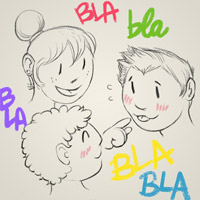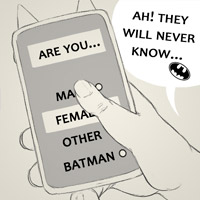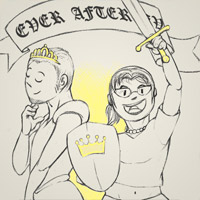It’s not always easy to turn into a gender-inclusive organization, so don’t give up when first challenges arise. Start with those points that you consider easier to integrate in your structure and gradually move towards a more gender equality structure and practice.
Turn challenges into a learning opportunities.
Gender inclusive language in the youth activities
Gender inclusive practical arragement of youth activities
Gender inclusive working style in youth activities
Gender inclusive activity designing in youth activities
Gender inclusive language in the youth activitiesBack to top

- When you refer to an unknown person, use inclusive language (‘she or he’, ‘he or she’) instead of using only “he” language.
- Identify men, women and transgender in the same way: humanity, human beings…
- Use the neutral language/term of “partner” instead of boyfriend or girlfriend when you refer their relationship status.
- Consider women and men in a parallel manner to keep writing gender-fair and/or gender neutral. (Mr. And Ms.)
Gender inclusive practical arragement of youth activitiesBack to top

- When you arrange accommodation for the participants divide the rooms according to participant’s declaration with regards to gender identity. If you don’t need to have this same-gender division do not do it. Being touch with the population of LGBTI community in order to involve stakeholders on gender field.
- Gather data on the gender identities of young people in your community for using in your services ??
- Include in registration form of your youth organisation a “sexual identifier”.There should be “male”, “female”, “other”, “I don’t want to specify” options.
- Inform, address and refer young people involved in your organisation to other relevant youth, women, LGBTI rights organisations as needed.
- Take into consideration “gender balance” when setting the team and the group of participants, and the invited experts/external speakers
Gender inclusive working style in youth activitiesBack to top

- Be sensitive towards verbal harassment as much as physical harassment.
- Be ready to address gender as an important issue in our society and also an issue in our activities (regardless the topics addressed in your activities include activities that will raise gender perspective)
- Consider that you work with people who have different identities (diversity in all its dimensions should be welcomed)
- Consider how social relationships concerning gender and its power may influence your organization.
- Treat people regardless of their marital status. There is no correlation between being married and moral superiority.
Gender inclusive activity designing in youth activitiesBack to top

- Be careful about the roles according to their gender play in your games/methods/activities. Do not tend to be automatically distributed according to traditional notions of gender roles.
- 2. Give the names in your text represent more than gender based majority. Be sensitive to use people characters in balance. If it is needed, take positive action supporting minority/disadvantaged groups.
- Reflect and and critically analyse how gender roles are reproduced in your youth work. Be aware in which environment female, male and intersex are shown in your activities (avoid stereotypical images,…)
- Do not be afraid of challenging gender bias comments from participants, experts or colleagues. Questioning and “challenging humor” could be used to raise awareness among young people that never reflected about these issues before.
- Provide proper activities (according to context, religions, traditions etc.) for equal participation for female and male participants.
- Include the LGBTQI people in your activities without stereotypical attributes. There should be various combinations of sexual identities of people in your activities without heteronormativity attributes.
- Be sensitive on how your activities allow equal involvement regardless personal gender, sexual orientation…